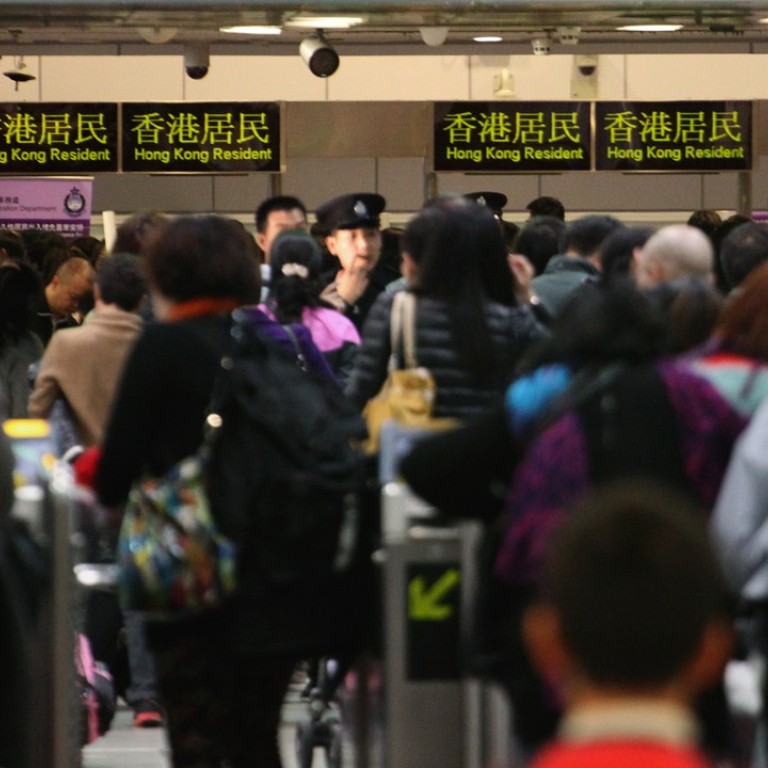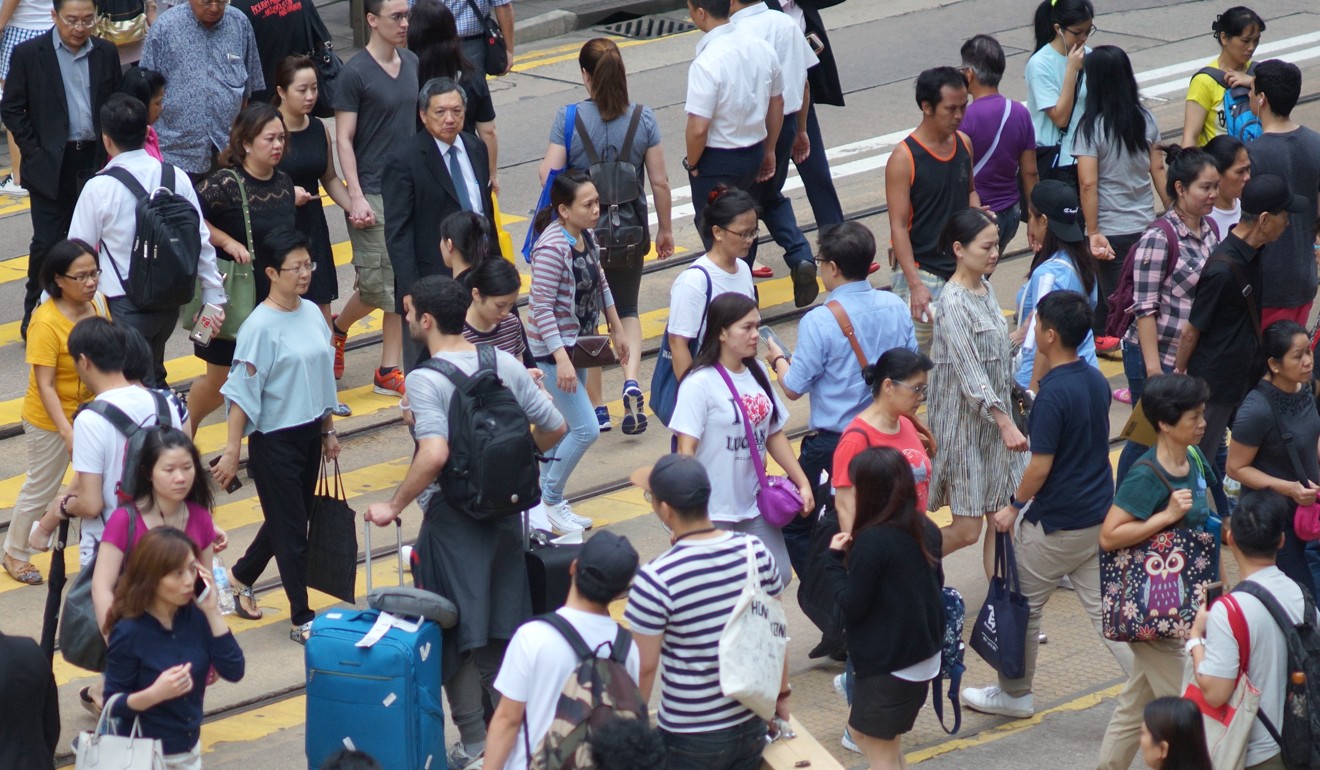
Number of mainland Chinese migrants coming to Hong Kong drops by almost 15,000 from last year, government data shows
The last time there was such a steep decline was more than a decade ago
The number of mainland migrants entering Hong Kong via a one-way permit saw its biggest drop in a decade, government data showed, raising questions on whether the city has become a less attractive destination.
Some 41,000 mainlanders moved to the city in the past 12 months ending June 30, according to figures released by the Census and Statistics Department (CSD) on Tuesday.
It was a decrease of 14,700 from the previous 12-month period when 55,700 mainland Chinese moved to the city via the scheme between mid-2016 and mid-2017, an 11-year high.
The last time there was such a steep decline was more than a decade ago, between 2005-2006 and 2006-2007 when the number fell by 14,900 to 44,700 people.
The one-way permit scheme, which allows up to 150 mainlanders each day to move to the city, is meant to help spouses and children born across the border reunite with their families in Hong Kong.
Close to 950,000 mainland migrants moved to the city via the scheme as of end-2016, making up about 12.8 per cent of Hong Kong’s population.
Paul Yip Siu-fai, chair professor of population health at the University of Hong Kong, said the drop could be attributed to seasonal fluctuations, such as parents waiting for the right timing to bring their children to Hong Kong. But he said the figures should be studied further to establish if the decline was due to the city losing its shine.
How a massive influx of Chinese migrants changed Myanmar’s second-largest city
“For married couples that want their kids to come to Hong Kong, it must mean that the city has something better to offer to them,” Yip said.
“But it’s become more expensive to live here, especially housing, so it is worth looking into whether people are less willing to come because Hong Kong is less attractive to them,” he said.
Hong Kong has consistently been ranked as one of the most expensive cities to live in the world, while the red hot property market has also made it one of the most unaffordable.

Anti-mainland sentiment has also been seen as a factor that has deterred mainland tourists from visiting the city in recent years.
In the last decade, the lowest absolute number of one-way permit holders coming to Hong Kong was 34,000 between mid-2013 and mid-2014.
More recently, angry Hong Kong protesters sought to drive out street performers who were new mainland Chinese immigrants from Star Ferry pier.
Number of Hongkongers planning to leave for new lives in Canada jumps 30 per cent
In response to a Post inquiry, a spokesman from the Security Bureau, said the yearly figures fluctuated due to a number of different factors, including the number of cross-border marriages between Hong Kong and mainland Chinese residents and the number of other eligible applicants.
China’s migrant workers are still marginalised and yet to find their voice in society
“It is especially the case for Hong Kong women getting married to mainland men. The husband won’t want come to Hong Kong. Usually, the Hong Kong wife will go to settle in the mainland,” Sze said.
The social worker said one possible issue was that the mainland authorities set quotas for different categories of applicants and in some years were not able to fill these quotas.
“Thus, some places get wasted.”
The CSD projected last year that there would be fewer mainlanders coming to Hong Kong via the scheme, with the number dropping from an average of 128 per day to 100 from mid-2026 onwards.

Marion Chan Shui-yu, the deputy commissioner for census and statistics, said this projection was based on the trend that more Hong Kong women were marrying mainland men, and these men were less likely to cross the border.
Such partnerships rose from 19 per cent of all cross-border marriages in 2006 to 33 per cent in 2016.
The number of mainland women marrying Hong Kong men among all cross-border marriages dropped from 81 per cent to 66.7 per cent in the same period.
The application, approval and issuance of the permits are under the remit of mainland authorities.


